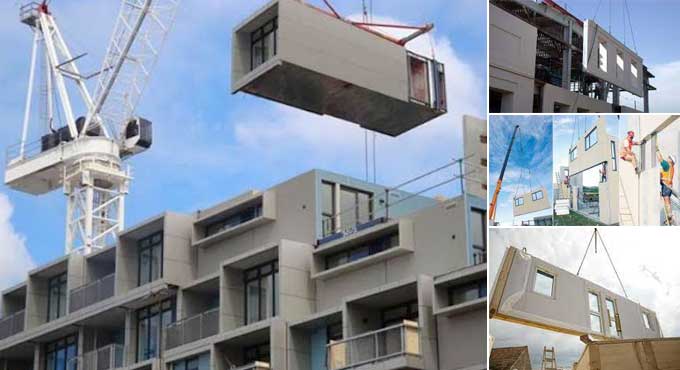
7 Building Construction Methods of the Modern Era

There have been numerous modern advancements in construction techniques and products that have revolutionized construction as we know it. The transformation in this sector is incredible and will lead to even more progress in the future. You can explore some of them right here.
Types of Construction Methods
1. 3D Volumetric Construction
In 3D volumetric construction or modular construction, units produce in controlled factory environments before being transported to the job site. Modules arrive at the site in a variety of shapes and sizes, ranging from a basic structure up to a fully finished, wired and serviced building.
The casting of modules is a way to create units that require a high degree of repetition and rapid assembly on-site by taking advantage of factory conditions. Its inherent advantages include thermal mass, sound absorption, and fire resistance, in addition to offering factory quality and accuracy and quick construction on-site.
2. Tunnel Form Construction
Tunnel formwork systems allow contractors to build monolithic walls and slabs in one operation each day. Concrete and formwork made in a factory or off-site are fast, reliable, and accurate, while cast-in-situ construction offers flexibility and economics.
Construction projects involving repeating cells, such as hotels, apartment blocks, and student housing, benefit from this fast-track method. Additionally, it uses the inherent benefits of concrete, such as fire and sound resistance, to provide economy, speed, quality, and accuracy. When concrete is striking, the formwork sections of the tunnel must swing out by a crane from side to side of the building. That makes it unsuitable for tight spaces.
3. Flat Slab Construction
Modern formwork simplifies and minimizes the amount of work required to build flat slabs. Early striking and panelized formwork systems can achieve a rapid turnaround.
Through the uninterrupted service zones beneath the floor slab, the use of prefabricated services can be maximized. Thus, flat slab construction is advantageous due to its simplicity in installing services.
Flat slab construction saves both time and space, and partitions and horizontal services can be positioned anywhere. Consequently, the occupier will have considerable flexibility in adjusting the interior layout to fit his changing needs. With post-tensioning of flat slabs, longer and thinner slabs are possible while requiring less reinforcement, with the signature program and labor benefits.
4. Precast Concrete Foundation
It is possible to construct foundations with precast concrete systems rapidly. Casting in a factory environment ensures high quality for the final product because the elements are usually to a bespoke design.
In many cases, concrete piles support the foundations. The systems enhance productivity, especially in adverse weather conditions, and reduce excavation requirements, which is especially advantageous for contaminated soils.
5. Insulating Concrete Formwork
Twin walled panels made from polystyrene or blocks insulate concrete formwork. Building formwork is a quick way to build the wall of the building. Concrete poured into the formwork. Ready-mixed concrete is concrete that has been manufactured in a factory and has quality assurance. Ready-mix concrete is most common. Using expanded polystyrene blocks provides better thermal insulation. Using concrete blocks allows for better soundproofing and robustness.
6. Hybrid Concrete Construction
A hybrid concrete structure can construct using precast and cast-in-situ techniques. A hybrid frame which combines the two, results in even greater construction speed, quality, and cost savings. By providing simple, buildable, and competitive hybrid concrete structures that provide consistent quality and performance, hybrid concrete can address client demands for lower costs and higher quality.
To learn more, watch the following video tutorial.
Video Source: Quantum Tech HD
7. Thin Joint Masonry
Masonry with thin joints reduces the depth of the mortar from ten millimeters to just three millimeters, which leads to faster laying and greater productivity, particularly with long walls.
Concrete blocks with a face size equivalent to two traditional concrete blocks can further increase construction speed by 13.5 percent. It takes only a few hours for a solid bond to form. This method eliminates floating, allowing for more courses to lay in a single day.


